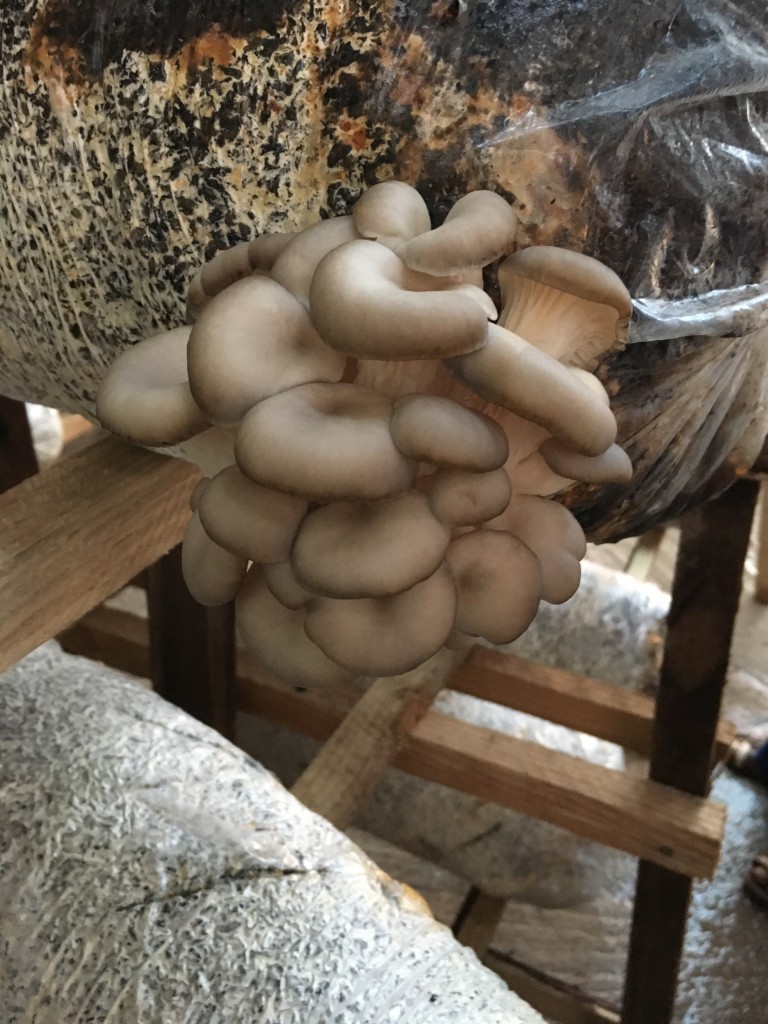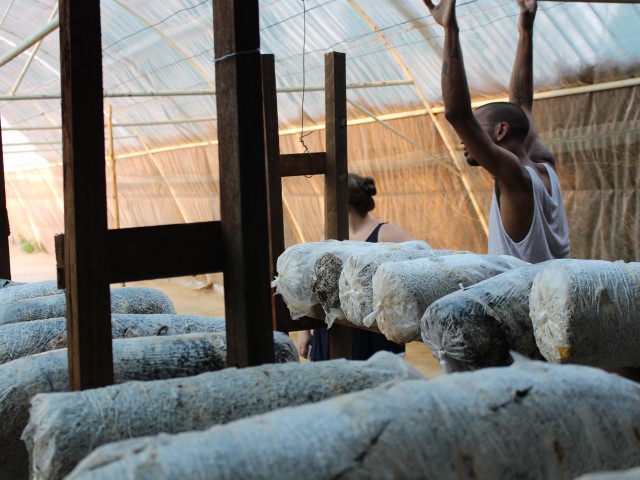MAD and the Future of Hope: Oyster Mushrooms
Chido Govera came to MAD 2 in 2012 to tell her story of how she became a farmer and activist in her home country, Zimbabwe. MAD has been collaborating with Chido and her growing Future of Hope Foundation in Harare to turn ideas into empowerment for women, girls, and communities in Zimbabwe and beyond. This post is one in a series covering our work together in Harare. Watch this space for more.

Pleurotus ostreatus, also called the Oyster Mushroom, is a saprotrophic fungus—it lives by digesting dead things, in particular, dead plant matter. This makes it uniquely well-suited at transforming otherwise unusable plant waste into tasty, economically useful, nutritious mushrooms. P. ostreatus’ conversion of biomass from the unwanted and inedible to the delicious is the biochemical process that enables Chido Govera’s social entrepreneurship work with her foundation, The Future of Hope, which trains and supports women, girls, and orphans in communities in Zimbabwe and South Africa in fungiculture and agriculture techniques to develop their self-sufficiency and empowerment.





